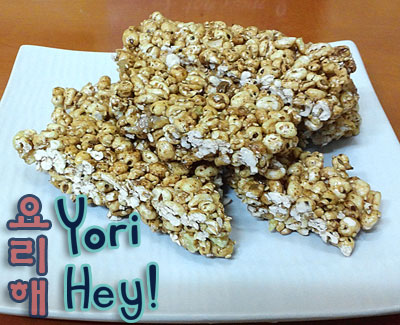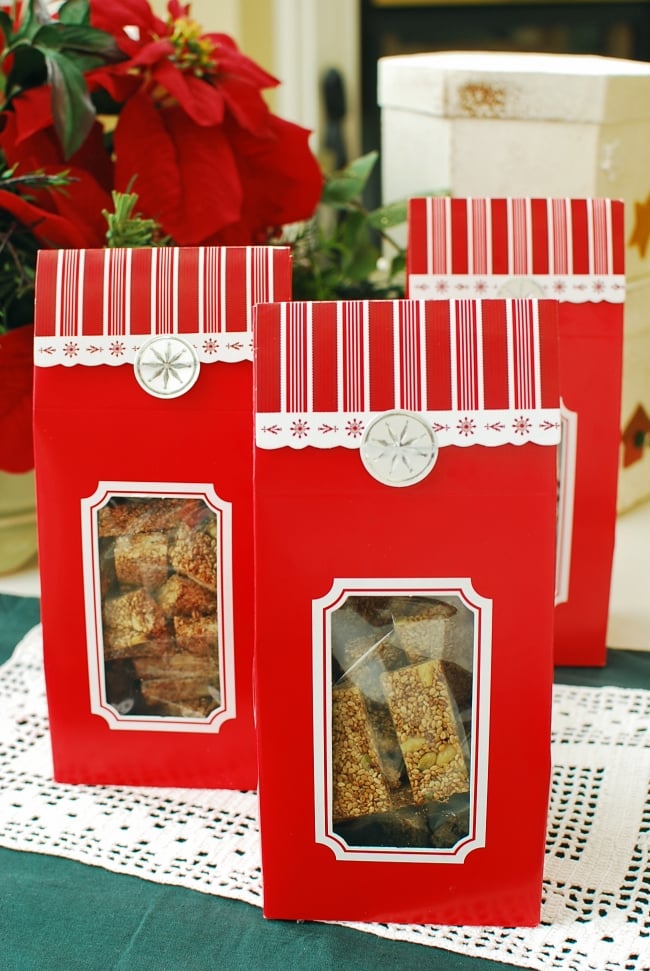Gangjeong
강정
Gangjeong is a hangwa (a traditional Korean confection) made with glutinous rice flour. It is a deep-fried "rice puff" with hollow inside, coated with honey followed by nutty beans, nuts, seeds, pollen, or spice powders. Gangjeong is often served during important events such as weddings, ancestral rites, and Korean New Year celebrations. Yugwa was widely distributed after the Goryeo dynasty due to the influence of Buddhism, and was called "Goryeo dessert" in the Yuan dynasty of China. Glutinous rice is soaked in water for four to five days, then pounded or ground into fine powder. Ten cups of glutinous rice flour is mixed with one-half cup cheongju (rice wine) and one-half cup honey, then steamed in a siru (steamer) lined with a wet bojagi (cloth). The steamed dough is kneaded, rolled into 1 centimetre (0.39 in) thick sheets, cut into rectangles 3–4 centimetres (1.2–1.6 in) long and 1.5–2 centimetres (0.59–0.79 in) wide, and dried in the shade. The well-dried gangjeong is first soaked in room-temperature cooking oil, then left to rise a little more in warm oil before it is deep-fried at a high temperature. Regarding the taste of Gangjeong in the 閨閤叢 Book of Kyuhap, It said, "I was surprised that Gangjeong chewed and flew away." As the saying goes, Gangjeong is better expanded and fried to the bottom. When all excess oil is drained, the rice puff is coated with honey, followed by nutty grains or powders such as toasted sesame seeds, pine nut powder, soybean powder, pine pollen, Angelica leaf powder, and cinnamon powder.
Source: Wikipedia
Recipes

Sesame peanut candy (Kkae-ttangkong gangjeong) recipe by Maangchi




